I tried to do an exercise from my textbook where I have to discover the gain for mid frequencies of the MOSFET below, but I can't solve it. I got stuck at one point.
I drew the small signal equivalent model of the MOSFET.
With this model I got that Vout = -gmVGS(RD//RL), so A = -gm*(RD//RL)
I couldn't find a way to calculate gm with the data I have from the exercise description.
Problem description: The circuit below presents a common source amplifier, whose source VDD = 12 V. Considering that the MOS transistor that composes the amplifier has infinite r0 and negligible intrinsic capacitances.
Question Draw the equivalent small-signal model of the amplifier, considering the capacitances indicated in the figure and determine the gain for average frequencies (gain maximum or Vout/Vin)
Data: : ID = 0,8 mA, Vtn = 1,0 V, RG1 = RG2 = 16MΩ, RD = RL = 16kΩ, RSig = 100 kΩ, CC1 = 4nF and CS = 4μF
I would appreciate your help to find the better way to discover the answers.

